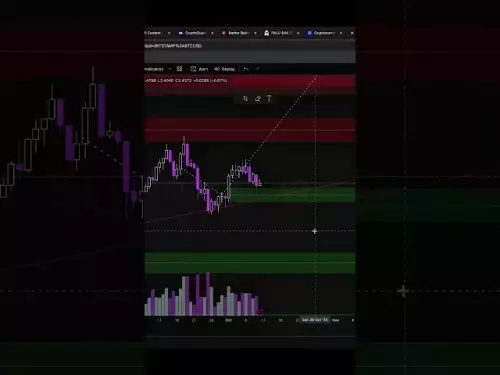 |
|
 |
|
 |
|
 |
|
 |
|
 |
|
 |
|
 |
|
 |
|
 |
|
 |
|
 |
|
 |
|
 |
|
 |
|
Cryptocurrency News Articles
Bitcoin, Risks, and Analysts: Navigating the Crypto Landscape
Oct 09, 2025 at 09:50 am
Bitcoin hits new highs, but risks remain. Analysts weigh in on market dynamics, potential pitfalls, and future prospects. What does this mean for investors?

Bitcoin's wild ride continues, hitting a new peak of $126,000 before experiencing a pullback. This prompts a crucial question: what's next for Bitcoin, especially considering the risks and the views of market analysts?
Bitcoin's Bull Run and Potential Risks
The recent surge in Bitcoin's price reflects sustained demand, particularly from Wall Street investors pouring funds into ETFs. However, storm clouds are gathering. One major risk is the potential bursting of the AI bubble. The stock market's AI-driven highs might be unsustainable, potentially impacting Bitcoin's performance. Investors like Orlando Bravo are cautioning about an impending bubble burst, naming companies like Nvidia and OpenAI as being in a risky investment phase.
Beyond the AI sector, Bitcoin itself shows risky patterns. A rising wedge formation on the weekly chart suggests a bearish breakout might be imminent. This, coupled with bearish divergence patterns in the RSI and MACD indicators, indicates a possible price drop below $100,000. Investors should closely monitor these technical signals.
Analyst Insights and Long-Term Outlook
Despite short-term risks, many analysts remain bullish on Bitcoin's long-term prospects. Robert Kiyosaki, for example, advocates for Bitcoin as a hedge against dollar devaluation. He and other analysts highlight Bitcoin's superior tokenomics, with its limited supply contrasting sharply with the inflationary nature of fiat currencies like the US dollar. Kiyosaki predicts Bitcoin will reach $500,000 by the end of the year and $1 million by 2030. BlackRock analysts project $700,000, while Cathie Wood's Ark Invest sees it rising to $2.4 million.
Analysts note that Bitcoin's capped supply of 21 million coins, coupled with mechanisms like halving, which reduces supply growth, contribute to its value proposition. The increasing adoption by public companies and the substantial holdings in Bitcoin ETFs further solidify its position as a store of value.
Validator Exodus in Ethereum: A Case Study in Crypto Dynamics
While Bitcoin dominates headlines, it's worth noting dynamics in other cryptocurrencies, such as Ethereum. A significant validator exodus, with approximately $10 billion waiting to exit the ecosystem, poses risks of price reversal. However, institutional investors like Grayscale are stepping in to fill the void, showcasing the complex interplay of factors influencing crypto markets.
Binance Coin's Rise
Binance Coin (BNB) recently reached a new ATH of $1,300, driven by increased adoption within the Binance ecosystem and macroeconomic factors such as the declining value of the US dollar. Analysts predict BNB could reach $1,500 by early 2026, highlighting the potential for growth in altcoins alongside Bitcoin.
Final Thoughts
Bitcoin's journey is far from predictable. While analysts offer valuable insights, and the long-term outlook remains positive, it's crucial to stay informed about both external risks and internal market patterns. Don't bet the farm on anything; always do your own research before making any investment decisions.
So, keep your eyes peeled, your wits sharp, and remember, in the world of crypto, a little bit of humor can go a long way. Happy investing, folks!
Disclaimer:info@kdj.com
The information provided is not trading advice. kdj.com does not assume any responsibility for any investments made based on the information provided in this article. Cryptocurrencies are highly volatile and it is highly recommended that you invest with caution after thorough research!
If you believe that the content used on this website infringes your copyright, please contact us immediately (info@kdj.com) and we will delete it promptly.






























































